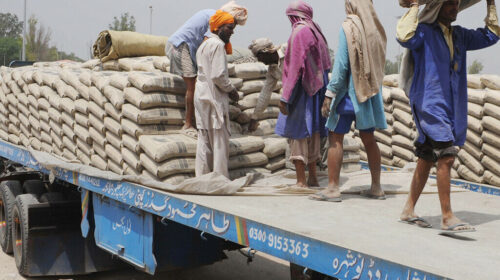Despite a visible slowdown in cement demand—though expectations earlier ran contrary to what transpired—and ballooning energy costs, cement industry in the first half of the fiscal year far exceeded estimates. Revenues and earnings grew substantially on the back of impressive retention, reduced overheads and financial costs, as well as a reasonable improvement in “other incomes”.
Total cement dispatches dropped 4 percent in 1H, with a massive reduction of 32 percent in exports and a small growth in domestic sales (2%). Low export prices and freight costs made exporting overseas infeasible, while cross-border exports to Afghanistan have been lacking lustre owing to the political transition happening in that country translating to reduced construction and development demand. Fewer exports—12 percent of all dispatches versus 18 percent in 1HFY21—placed the burden onto domestic demand which was supposed to catch up. All signs pointed toward a smooth sailing growth in construction as government’s hydro power projects sped up and Naya Pakistan Housing Projects kicked off the ground with a sweet mark-up subsidy on the offer for new home owners up for grabs. Not to mention, a massive construction amnesty scheme that was supposed to mobilize investments in new commercial and private sector projects. The demand has thus far disappointed.
At the same time, however, cement makers have been raising prices to keep margins at reasonable levels with fast surging cost of fuel and electricity (particularly coal which has wreaked havoc in the global markets). This is where energy efficiency investments came into play and companies using waste heat recovery units or refused-derived technology were able to cushion the blow from high energy costs by using internal fuel sources. Coal mix was also tweaked and procured from non-traditional suppliers from Afghanistan or Quetta as global coal prices came to a head. Reasons for that have been well-documented in this space. Afghan coal was about 25-30 percent cheaper compared to South African coal. This timely diversion allowed cement manufacturers to secure margins and raise prices slowly.

Compared revenues and cost per ton sold, there is a visible difference. Revenue per ton sold grew 38 percent compared to costs that rose 33 percent, hence allowing for the margin improvement in 1HFY22 to 25 percent. Lower exports contributed to lower distribution and selling expenses. Meanwhile, “other income” that included exchange gains, and earnings from prudent investments contributed to 13 percent of pre-tax earnings which certainly served as a buffer.
The question is; will these bounties sustain over the next half of the year. It is unlikely. The next big crisis (after Covid-19) sending shockwaves to the world is the Russia-Ukraine war. Coal prices are at their record high as supply is constricted, and fears of more supply disruptions are causing prices to shoot up (“Coal: Brrrr!”, Mar 10, 22). Afghan coal, priced lower, is also becoming pricier given increased demand. Cement manufacturers have also been facing procurement challenges as supplies remain constrained. Lack of coal availability will hamper production. The uncertainty in prices may also keep cement manufacturers away from coal buying which will naturally affect production.
At the same time, inflation has certainly put a dampener on demand. More price hikes will keep buyers at bay. In the past three weeks, cement prices have increased by Rs15-20 per bag (read: “Cement prices in flux”, Mar 8, 22). As cement prices increase, demand may further diminish, with exports already unviable at this point.







